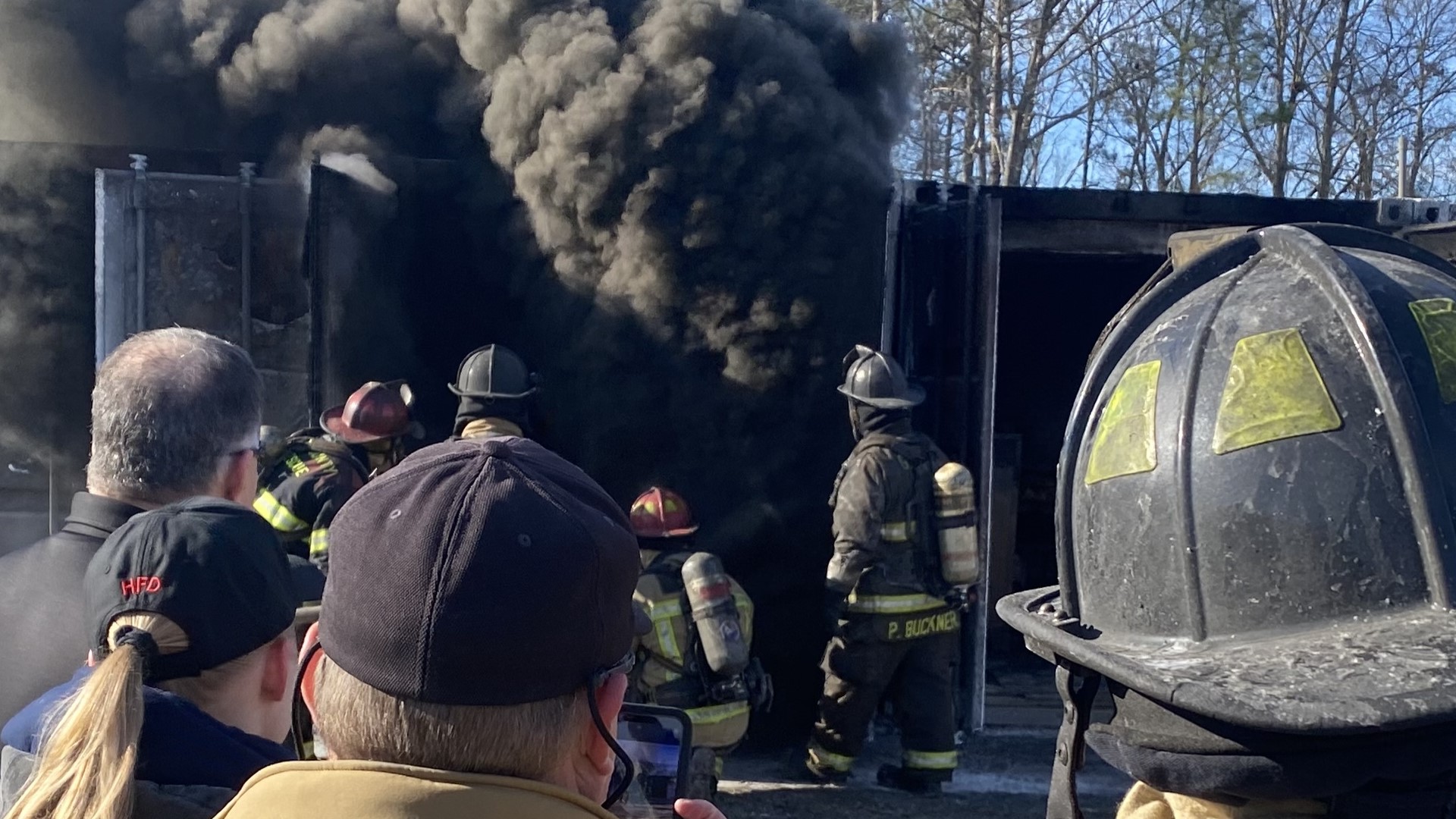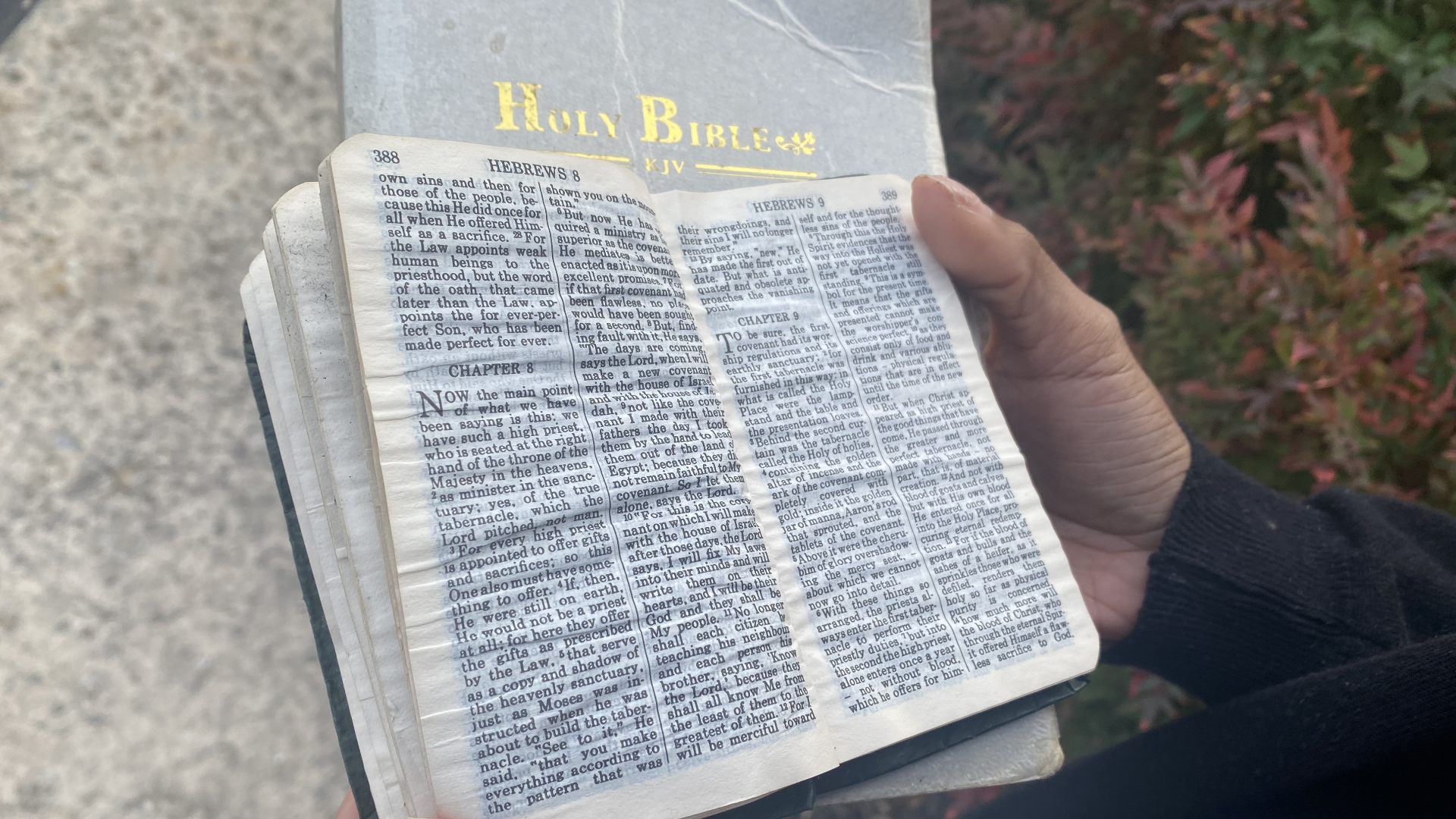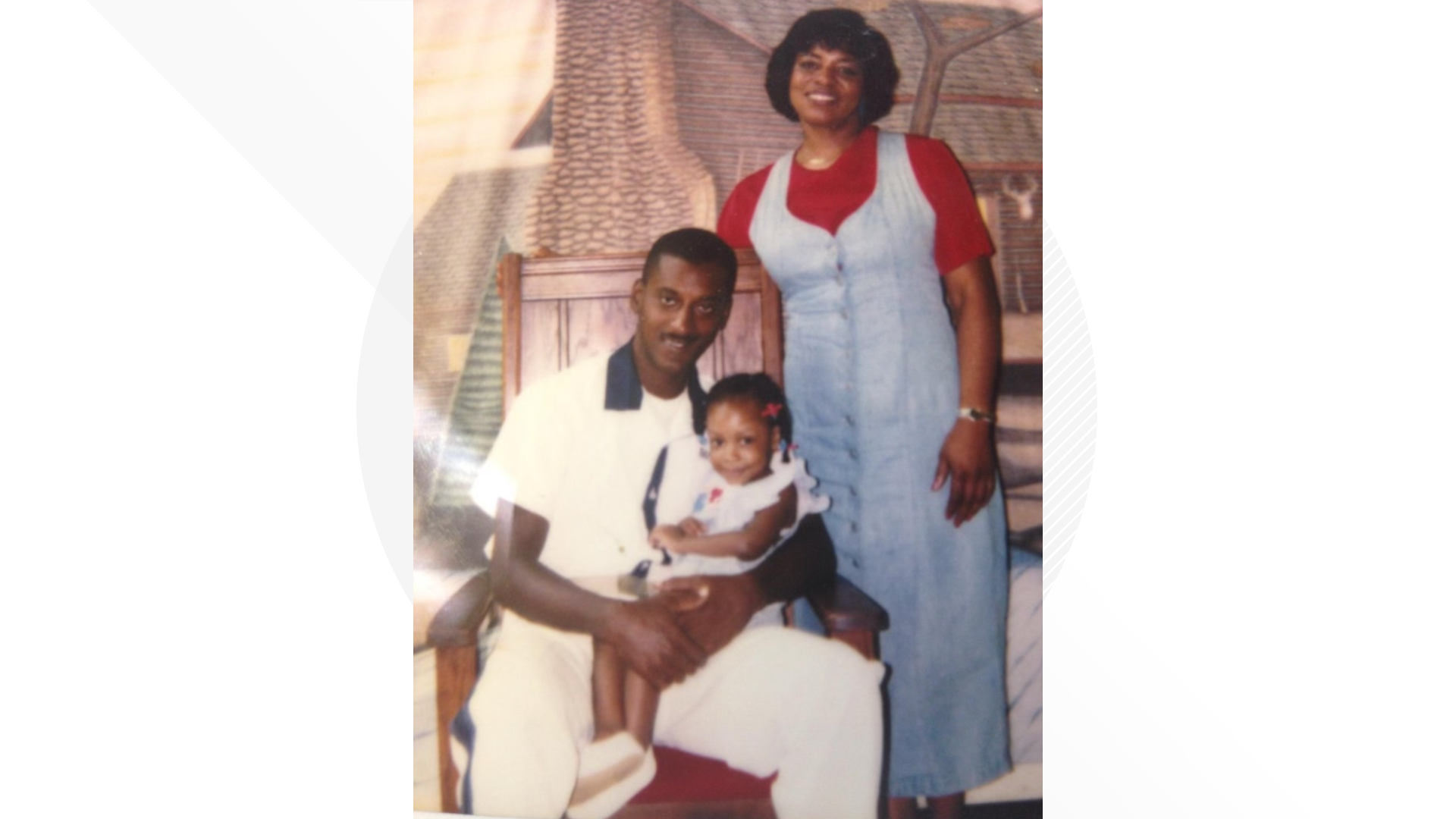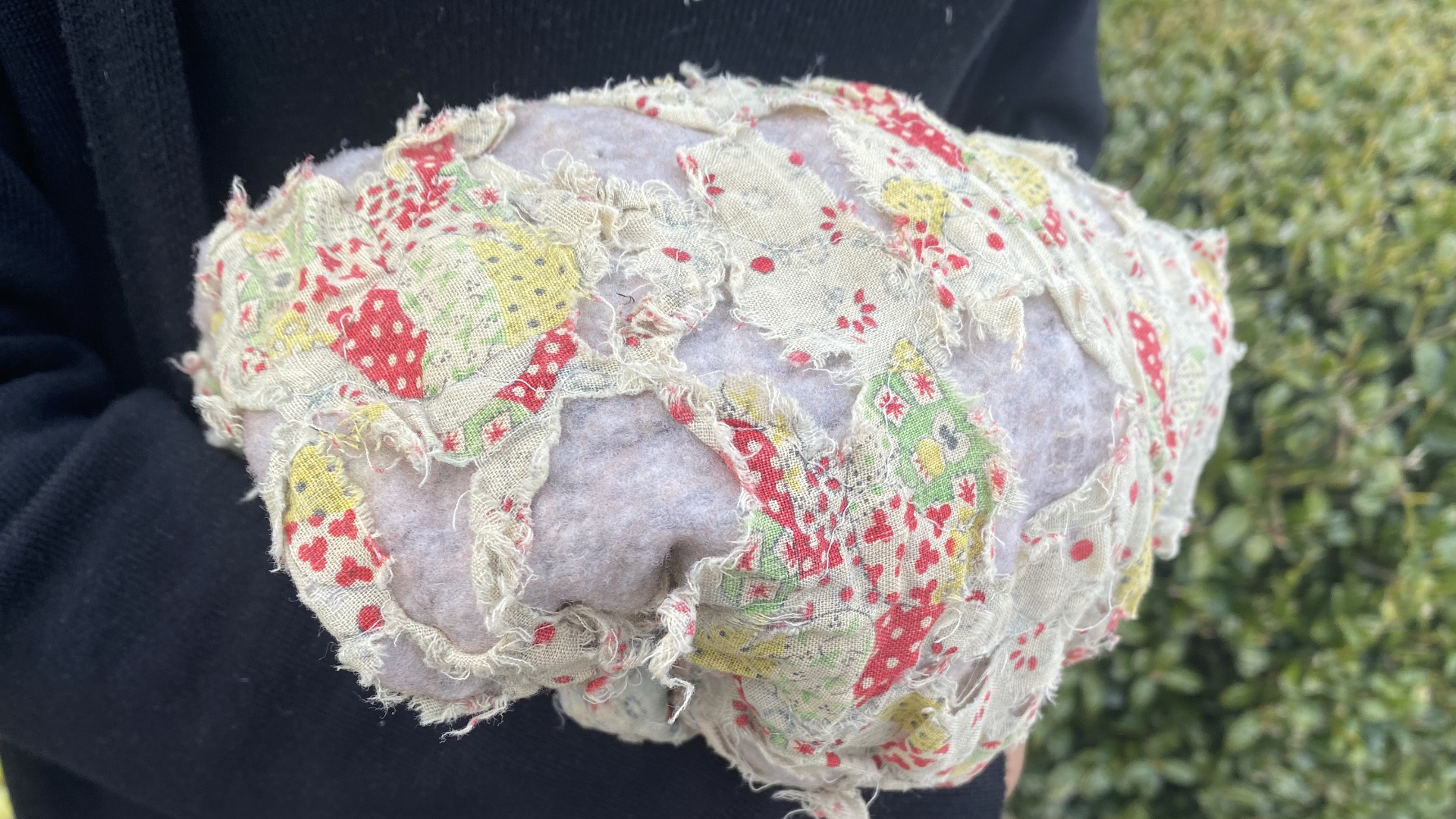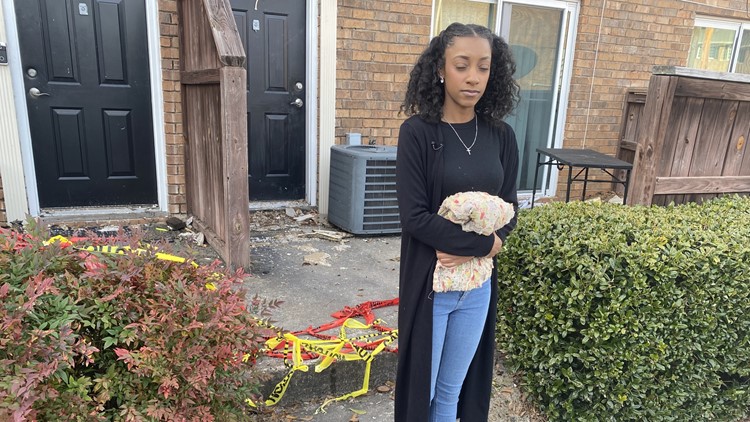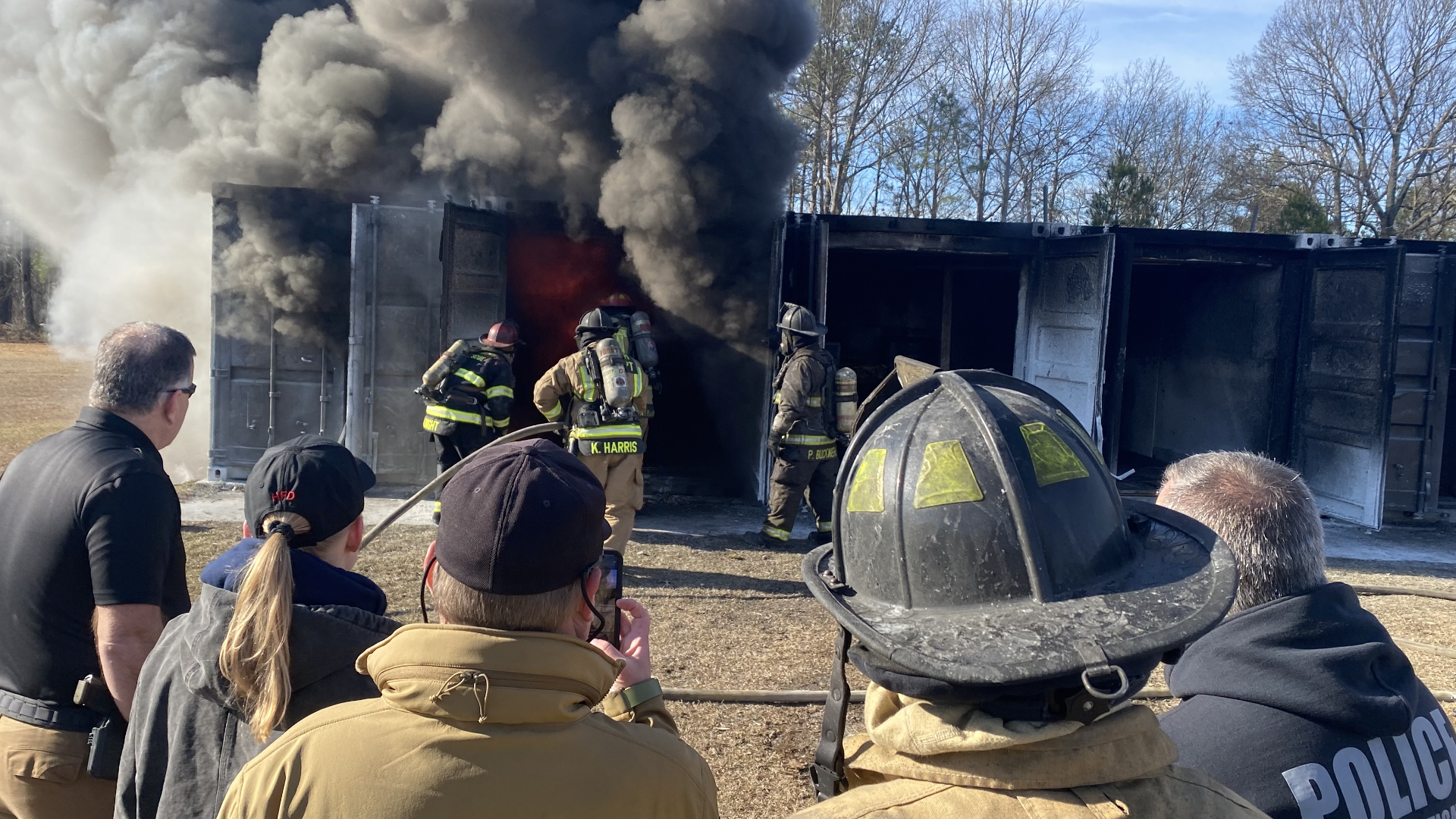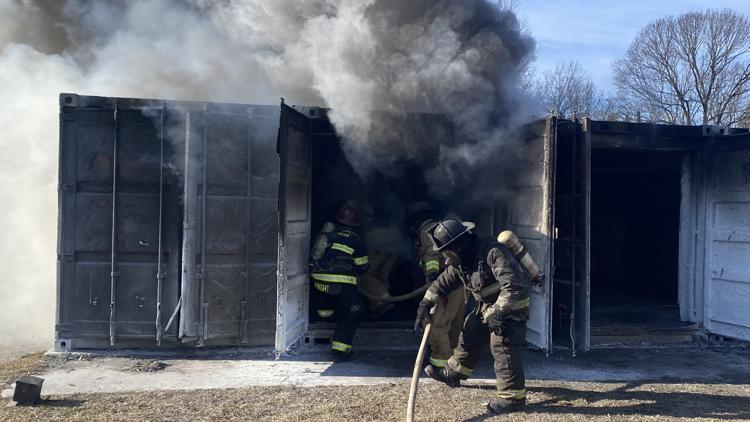New homes are burning faster. Here's what firefighters want you to know
Modern homes burn eight times faster than 50 years ago and can produce 200 times more smoke, according to the Fire Safety Research Institute.
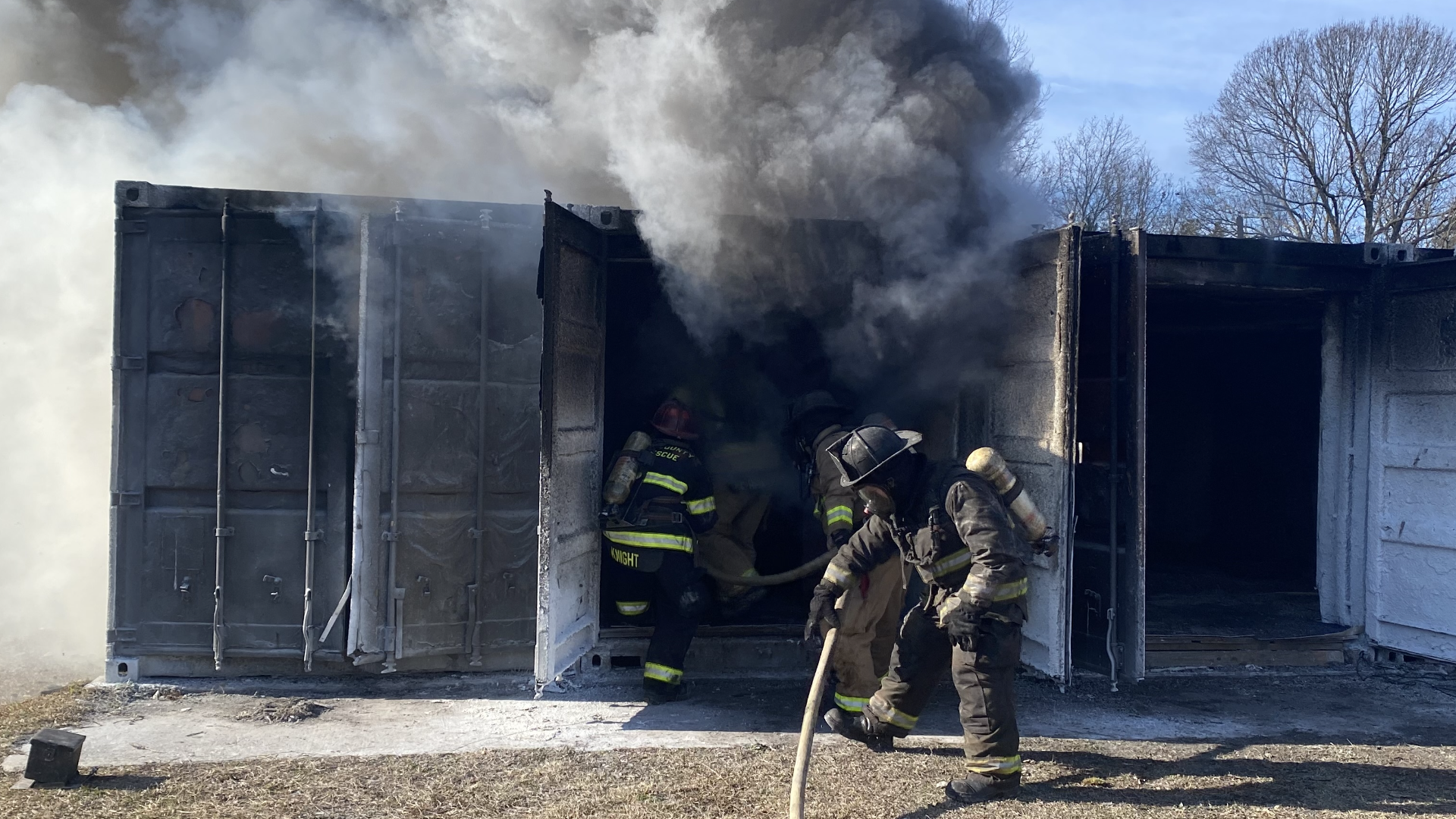
Every 24 seconds, a fire department responds to a fire somewhere in the country.
That’s according to the National Fire Protection Association. With fires feeling like they're becoming more common, Georgia firefighters are training to figure out why.
Over the years, the materials homes are made of don't stand a chance against intense flames.
In north Georgia, fires have torn through roofs of apartment buildings in moments, flames have ripped through smaller homes, displacing families, and firefighters said what’s inside the home likely won’t survive either.
As furniture material gets cheaper, new construction is built quicker, Georgia firefighters said they’re quick to ignite, and fires are burning through homes faster. People now have less than five minutes to safely get out.
11Alive shares insight on how firefighters are training to save lives in the midst of these fast-moving flames and shares resources on what families can do to prevent a fire – or what to do if they're impacted by one.
Bibles, blankets survive
In the midst of the ashes, there's not much left for Demetra Sanders to save.
"Absolute devastation. It's pure insanity," she said, walking through the remnants of her home that caught fire in January.
She said that's when the reality of her situation really hit home.
"That everything is just wiped out. Your whole life is gone," she said.
But Sanders found a piece of hope in the midst of the rubble.
Still drying out from the firefighters' hoses, two of her mother's Bibles escaped the flames.
"She would always carry this in her purse wherever she went," she said, flipping through the pages.
Her mother died 15 years ago and there's not much Sanders has left of her.
(Listen to Sanders' story in the video below. Scroll to continue the story)
But against all odds, a blanket her mom made for their family in 1974 also made it out intact.
"It's been with us for 50 years," she said. "With me, 32 years. She is definitely tattered and worn."
Tattered and worn - but unburned.
After the fire, Sanders discovered the antiques held up.
"Everything else is gone. Ikea - gone; Wayfair - gone," she explained. "Goodwill, your grandma's furniture, she's still there."
Sanders referenced an antique dresser she bought at the second-hand thrift store. Firefighters across the state said its survival makes sense and is similar to how houses hold up against the licks of the flames as well.
Bibles, heirloom blanket survive fire | PHOTOS
"With older construction, you would have adequate time to get out," GPSTC State Firefighter Instructor Jeff Dean said. "New construction comes down very fast."
He said homes and furniture made 50 years ago hold up for much longer than newer construction materials.
The state runs side-by-side controlled burns to prove it.
"It's minutes, literally minutes, before a room can become fully involved and have flashover. Flashover is a dangerous thing. People don't survive that," Dean said.
Flashover is when everything in the room ignites.
It's what happened at Sanders' house, yet somehow, the things she cherishes the most are safe.
"I broke down, I broke down instant tears. It was wet and soggy and full of smoke," Sanders said.
She's holding on tight to her mother's Bibles and blanket -- forever remembering and taking to heart the lessons she learned in the fire.
"I can't hold on to a pair of boots, but I can hold on to this," she said.
How fast fires burn
While Sanders recovers from the devastation she experienced, firefighters are exploring how to keep people safe as homes and what they're furnished with ignite quicker than ever.
Barrow County Fire Marshal Cpt. Jessie Knight said firefighters have to think and work fast because now, every second could potentially save a life.
"By the time we get the call at 911, we are already behind the 8-ball," he said. "That's because of the rapid progression of fire through the homes with these lightweight construction and synthetic fibers."
Firefighters now run drills to show how fast new furniture goes up in flames compared to sturdier pieces constructed years ago.
Firefighters train to battle fast fires | PHOTOS
But it's not just what's in the home that burns faster -- it's what the houses are made of.
"With older construction, you would have adequate time to get out," Dean said. "New construction is very quickly coming down. It's not going to stay up long."
How fast fires burn
He said weaker construction materials and open floor plans in new homes lead to fast fires. Modern homes burn eight times faster than 50 years ago and can produce 200 times more smoke, according to the Fire Safety Research Institute.
Firefighters found that families 30 years ago had 17 minutes to escape before flashover. Now, there are just 3 or 4 minutes to get to safety - a factor firefighters keep top of mind as they try to avoid losing lives in a fire.
(The chart below shows fatalities in Georgia fires since 2021. Scroll to continue the story)
"We've had to adapt and overcome with some of those challenges thrown our way because of new construction," Knight said.
Firefighters said what's inside the home could also impact how fast the flames grow, explaining that antibacterial wipes can act like lighter fluid and household cleaning chemicals could feed the fire.
Knight added that firefighters have to be proactive now, which includes helping new construction site owners understand what they'll have to overcome. Firefighters now visit new construction sites to understand what they could potentially walk into.
"So if an emergency happens in that home, they know what they're getting into," he said.
Fire fatalities and how officials are trying to prevent them
More than 100 Georgians have died each year over the last three years due to fires. This is based on data from the Office of the Insurance and Safety Fire Commissioner. Last year, 104 people died from all types of fires -- whether they were in their houses or in their cars.
The colder months, on average, typically experience the most fire fatalities in Georgia. Last year saw the most deaths in March, with 27 people who died, and the second highest in January, with 25 deaths.
(Play the interactive graphic below and turn your volume up; scroll to continue the story)
On a national level, based on a 2018-2020 report from the U.S. Fire Administration, an estimated average of 1,900 deadly fires in residential buildings were reported to fire departments across the U.S. There was about 2,745 deaths, according to the report. The time period of 11 p.m. to 7 a.m. accounted for 45% of these fires with the highest being between midnight to 1 a.m.
"Typically fires are going to breakout in the living room, kitchen area," Knight explained. "And with you asleep at night, that takes away your primary exit from the home."
Knight's words are backed by data.
According to the report, a main factor contributing to these catastrophes was being asleep. When sleep was listed as a contributing factor, "smoking" and "other unintentional, careless" actions were considered to be leading causes.
Whatever the reason, Knight is advising people to have an escape plan.
"Any possible way for them to get out - staying low, getting out quickly, knowing where your kids are," he rattled off, adding that having this idea ahead of an emergency could save seconds.
Sanders was one of the lucky ones. She barely got out - and those seconds saved her life.
"That's when it really hit home. That everything is just wiped out. Your whole life is gone," she said.
She added that everyone needs to take the time to prepare.
"Once you see that smoke, it's over with. It's going to consume everything in its path," she said.
Prevention and aftermath Resources
Prevent a fire
Firefighters said people can do three critical things to prepare. It's as easy as looking at what's around one's home:
- Have new batteries in all smoke detectors
- Keep a working fire extinguisher in the home
- Make sure to always close your door before you go to bed, as this will help slow the spread of fire.
Is your area vulnerable to fires?
The Federal Emergency Management Agency leverages information from the U.S. Fire Administration. Since 2012, USFA has collected information on home fire fatalities compiled through a daily internet search of U.S. news media reports "to help raise awareness about the danger of fire and the frequency of home fire deaths."
USFA data, along with the CDC's Social Vulnerability Index, aims to help communities better understand the fire problem and create efforts to address fire prevention within vulnerable communities and at-risk groups.
Use the tool below to see which areas are most vulnerable.
Aftermath of the fire
Following a house fire, one of the first things you should do, aside from reporting the fire to your landlord or mortgage company, is to reach out to your insurance company, according to the U.S. Fire Administration.
When you get in contact with them, ask the company for any recommendations of businesses that specialize in cleaning and restoring personal items. It's important to know if your insurance company will be paying for the cleaning. When you reach out to the cleaning service, make sure to obtain a cost estimate in writing. You should also ask what you should be doing to keep your home safe until it's repaired.
The U.S. Fire Administration also recommends saving receipts for anything you've spent related to the fire. The receipt could prove any losses claimed on your income tax and may be needed by an insurance company. It may also be beneficial to check with an accountant or the IRS about any benefits for those recovering from a fire.
However, for those without any insurance, local organizations may be able to assist. Two big ones are the American Red Cross and the Salvation Army. It may also be beneficial to look into religious organizations, community groups, state or municipal emergency services offices, nonprofit crisis-counseling centers and public agencies like the public health department.
The Red Cross, in particular, has a track record of responding to fires and can help those experiencing disasters with finding a safe place to stay as well as the recovery process, ranging from emotional to financial.
The Salvation Army is similar in that it also offers disaster relief services for various circumstances and can "help meet survivors' most urgent needs for food, clothing, shelter and medical services." The organization can adapt to the unique needs of each person and circumstance to support long-term disaster recovery operations. It's able to hone in on the biggest needs and seek out who can provide those items to survivors.
However, aside from resources and getting assistance, the U.S. Fire Administration and The American Red Cross recommend working to replace the following documents if they were destroyed or lost in a fire.
Documents to replace
- Driver's license
- Auto registration
- Titles and deeds (records department in the area it's located)
- Insurance policies
- Military discharge papers
- Passports
- Birth, death and marriage certificates
- Divorce papers
- Social Security or Medicare cards
- Credit cards
- Stocks and bonds (contact the issuing company or your broker)
- Wills (contact your attorney)
- Medical records
- Warranties
- Income tax records (the IRS center or your accountant)
- Citizenship papers
But for Sanders and others like her, there are some items that are irreplaceable.
And with the loss of a mother, holding a physical item entailing heartfelt memories can mean the world, especially in the depths of despair and destruction. Sanders said it was a miracle to still be able to hold on to those last mementos: Bibles and a blanket.
"Love and affection, when I look at it. When I hold it," she said. "I am really grateful that I still have this part of my mom with me."
And it's that same love that Sanders can hold on tight to as she keeps pressing on, rebuilding her life from the ashes every step of the way.


